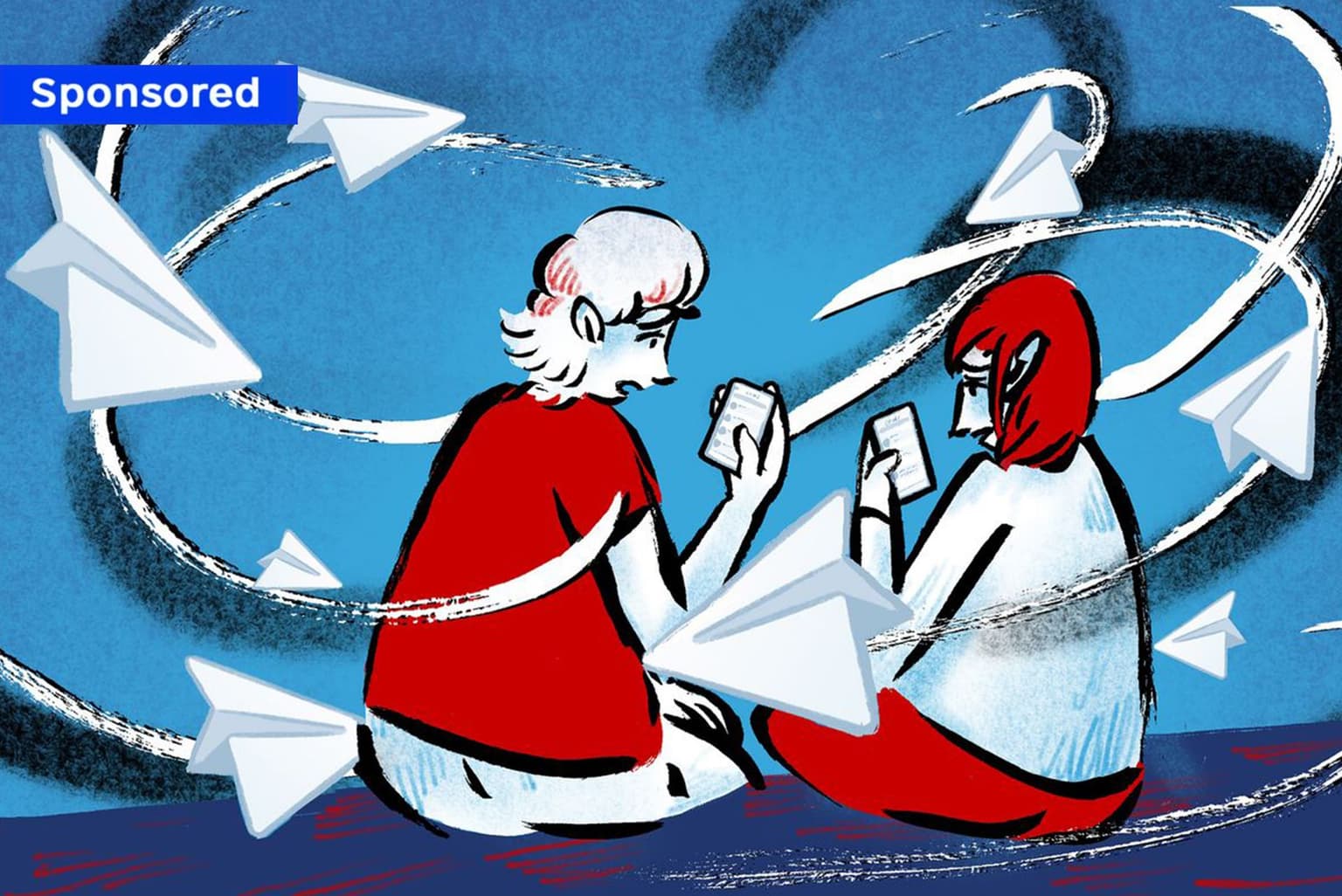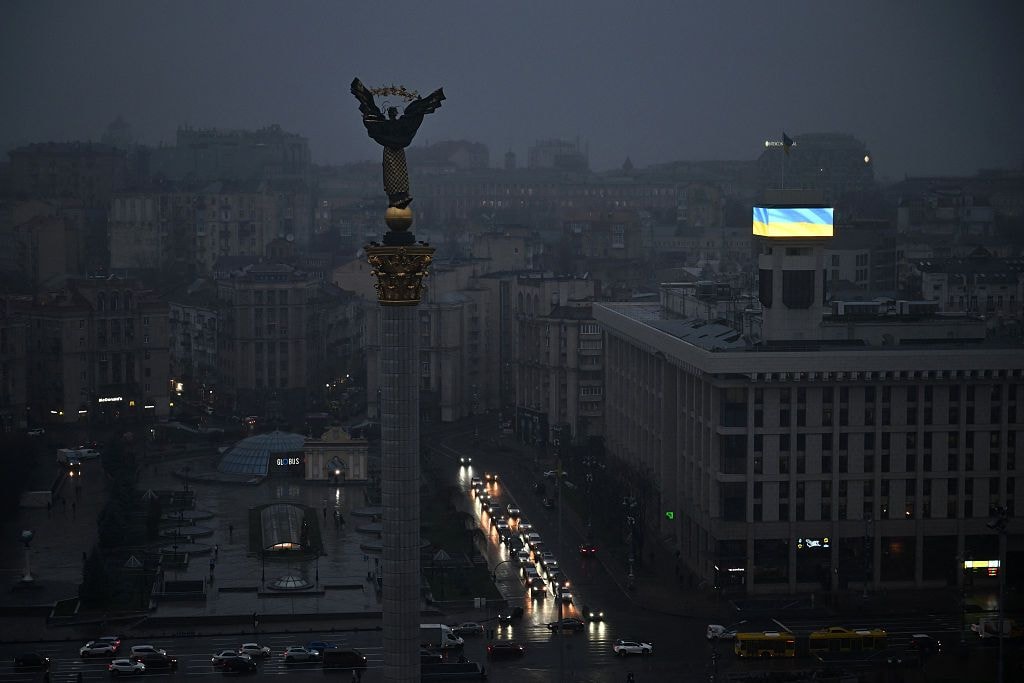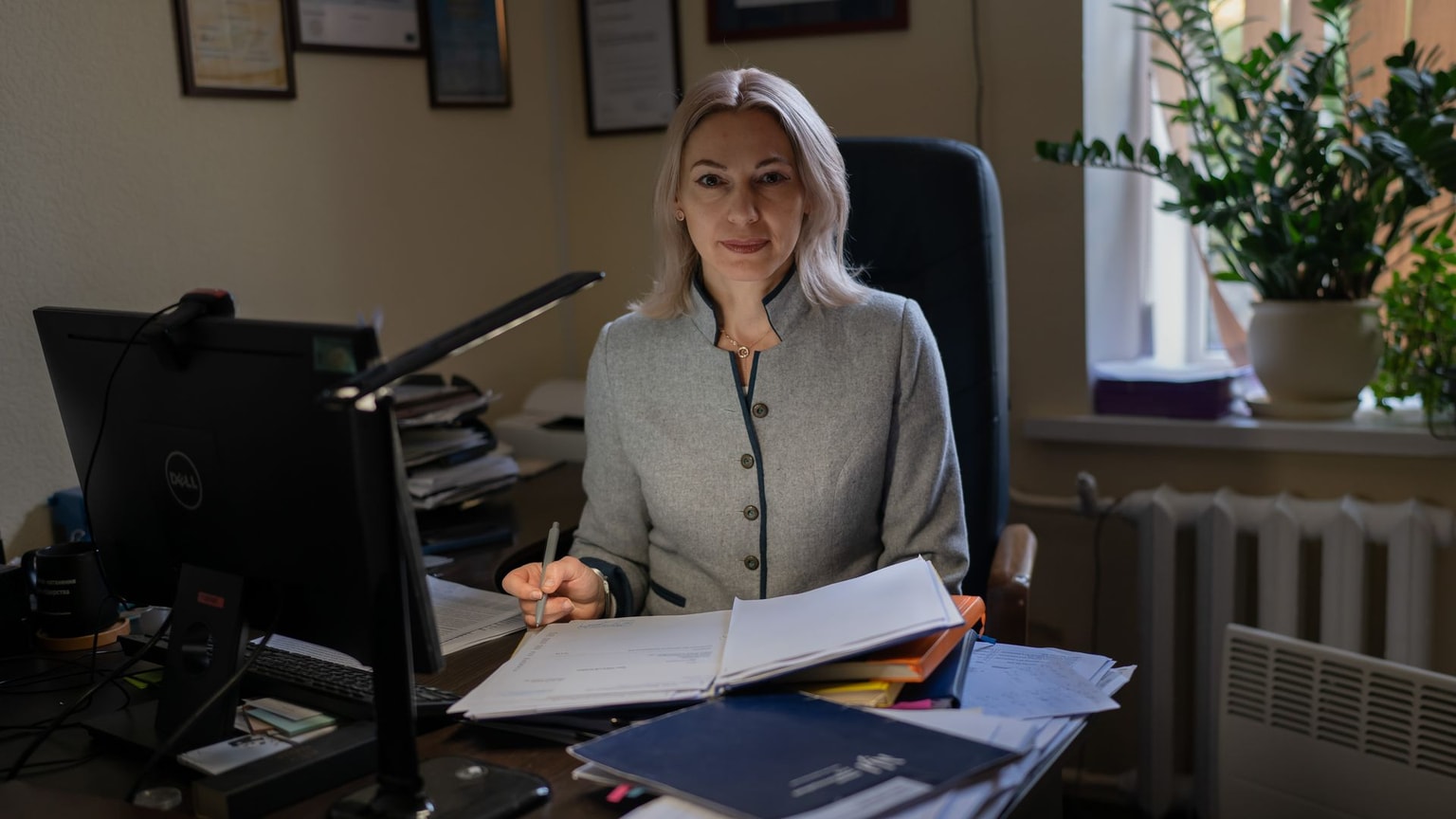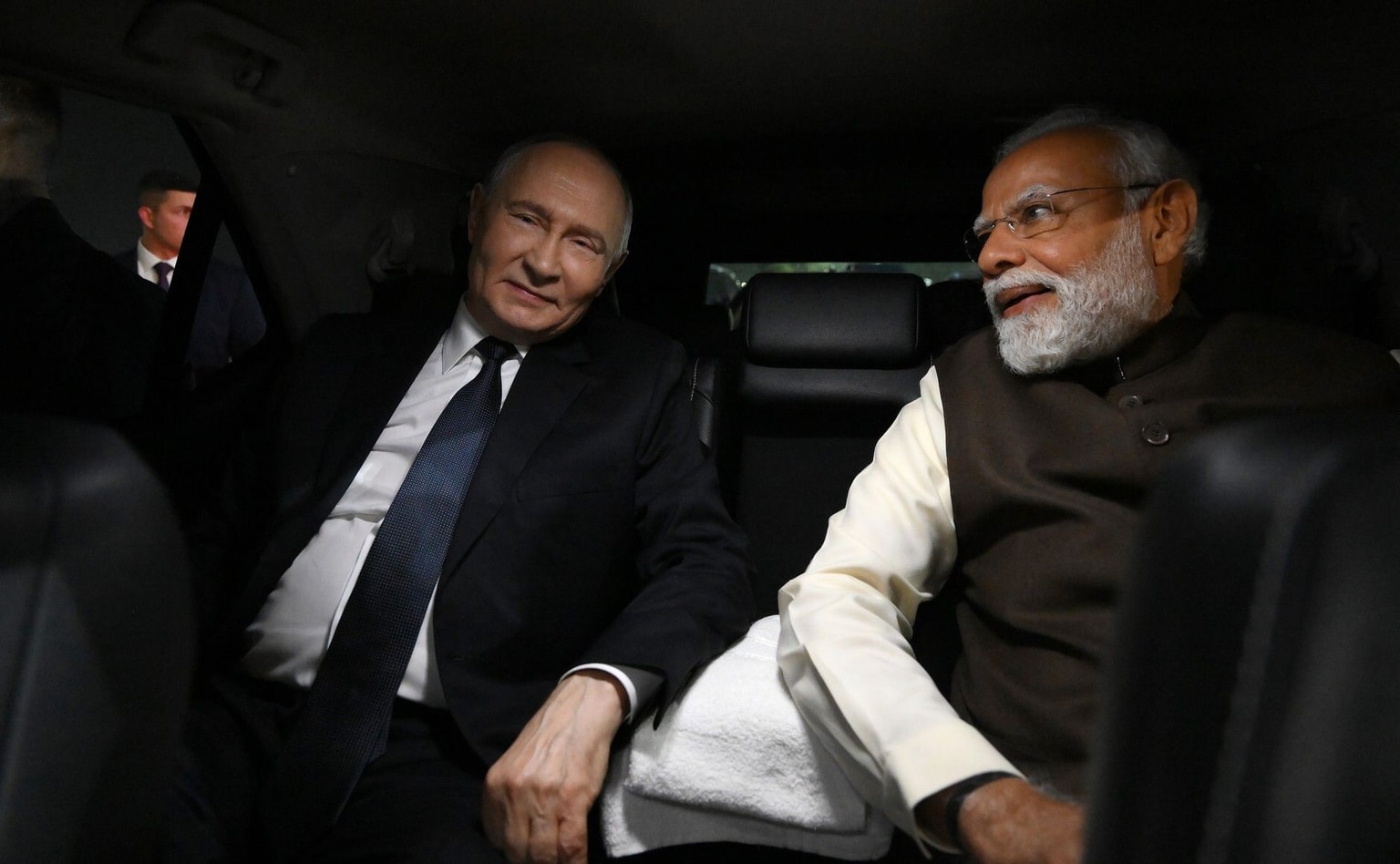More Ukrainians get news from TikTok and Telegram, fueling propaganda and privacy concerns

Amid the ongoing war, Ukrainians' growing reliance on social networks for real-time news reflects a search for immediacy — yet this shift exposes them to new forms of disinformation.
The trend toward getting news from social networks is global, but in Ukraine it has taken on a distinctly wartime character. For many, these platforms are a lifeline, offering instant updates on Russian attacks or troop movements.
Yet the same qualities that make them indispensable also make them dangerous.
Disinformation spreads faster, and Russian special services exploit social platforms to recruit Ukrainians. Meanwhile, traditional media are forced to compete with unregulated anonymous channels that blur the line between information and manipulation.
Internews Ukraine, an organization that has researched and supported the country's media sector for nearly 30 years, presented a study on how Ukrainians consume news in 2025 and how those patterns have shifted over the past decade.
The survey of over 1,600 respondents found that 86% get their news from social networks, and 37% rely on them exclusively. And while most respondents now receive breaking news on their smartphones within seconds, the accuracy of that information remains uncertain — as do users' abilities to tell real news from fake.
"Disinformation is also changing, and it is not standing still," Dzvenyslava Shcherba, an analyst of Russian disinformation at Internews Ukraine, told the Kyiv Independent.

Telegram and TikTok take the lead
Telegram, founded by Russian entrepreneur Pavel Durov, remains Ukraine's most popular messaging app for both communication and news consumption as of 2025, according to the study by Internews Ukraine.
The platform has a controversial reputation due to security concerns and allegations of user privacy violations. Telegram does not use end-to-end encryption by default, and its operators have faced accusations of cooperating with Russian intelligence services and sharing user data with them.
Telegram issue is not about freedom of speech — it is about national security.
On Sept. 19, 2024, Ukraine's National Cybersecurity Coordination Center banned the use of Telegram on official devices by state employees, military personnel, members of the security and defense sector, and critical infrastructure workers. The decision was also supported by military intelligence Chief Kyrylo Budanov.
"I have always advocated and continue to advocate for freedom of speech," Budanov said. "But the Telegram issue is not about freedom of speech — it is about national security."
Despite the ban, many public officials, including President Volodymyr Zelensky, continue to maintain Telegram channels to share updates and official statements with the public.
In addition to the risks associated with data privacy, Telegram has become a convenient channel for Russian propaganda and disinformation. The platform is also used by Russian special services to recruit Ukrainian citizens for intelligence-gathering and subversive activities, often targeting both those seeking easy financial gain and vulnerable minors.
Messages containing disinformation are frequently published not just by overtly pro-Russian channels but also by accounts pretending to be "patriotic" or locally focused, linked to particular regions or cities, according to Shcherba.
In her view, such strategies are designed to build trust with readers and make hostile narratives more persuasive, tapping into emotions, fears, and conspiracy-driven thinking.
At the same time, the analyst identified anonymity and lack of regulation as the social network's key threats — unlike platforms such as Facebook, which enforce clearer content rules and have more active moderation.
"Questionable channels with false, manipulative, and violent content are simply not blocked, and if they are, new ones appear very quickly in place of the deleted ones," Shcherba said.
TikTok has also risen in popularity in Ukraine over the past year, according to the study.
The platform has faced criticism over user privacy, particularly because its data could potentially be accessed by the Chinese government, as TikTok's parent company, ByteDance, is based in China.
Several Western states, including the U.S., have raised concerns that TikTok could be exploited for espionage, propaganda, or influence operations, especially in countries experiencing geopolitical tensions.
According to Shcherba, Telegram and TikTok carry similar risks, but TikTok is particularly effective at reaching young audiences through bright, viral videos — many of which feature visual fakes or AI-generated content.
Concerns about TikTok's influence on Ukrainian audiences are further reinforced by its role in recent presidential elections in neighboring countries, such as Poland and Romania, where manipulation and disinformation from Eurosceptic candidates, including those advocating a halt to aid for Ukraine, were widely disseminated on the platform.
Shcherba expressed skepticism about fully blocking such social networks, saying that other platforms would quickly fill the void. Instead, she called for targeted blocking of specific resources, couple with continuous monitoring for the emergence of similar channels.
However, this approach could pose a new challenge for Ukraine's information policy and legislation.
Even channels run by sanctioned public figures, such as Oleksiy Arestovych, a former freelance adviser to the president's office, remain accessible to Ukrainian users on Telegram, whereas on platforms like YouTube, they are only available through a virtual private network (VPN).

Fighting fakes
Russia's full-scale invasion has changed how people consume information, making them more confident in identifying false or misleading content. Yet spotting disinformation is still far from easy.
According to the study, 75% of respondents believe they can distinguish between fake news and real news; yet, in practice, only 6% were able to correctly identify all the examples of disinformation presented during the survey.
The Internews Ukraine analyst attributed this gap primarily to the evolving nature of disinformation. While earlier Russian fakes often had little connection to reality, propagandists now frequently use "gray disinformation," blending accurate facts with manipulations. Additionally, visually deceptive content is becoming increasingly sophisticated.
"Many disinformation narratives are no longer so primitive and obvious," Shcherba added.
The consumption of verified information is also becoming increasingly complex as the media continues to grapple with public trust.
Over the past year, trust in the media has increased, with social media users more frequently seeking news from official media accounts, such as those on Facebook or YouTube, rather than from unverified public channels.
Yet they continue to express slightly higher levels of trust in social networks than in traditional media, and even greater trust in their immediate social circles. Updates from Ukraine's General Staff and Defense Ministry continue to be highly trusted, according to the study.
At the same time, even information from reliable sources can become distorted as it spreads by word of mouth. Another common case is when a friend or relative shares news from an anonymous Telegram channel — where the news itself is hard to verify, just like its author or administrator.
"Such results highlight the importance of developing new formats and communication strategies within the media. Unfortunately, it is often easier for people to read news in an anonymous Telegram channel than to visit traditional media outlets," Shcherba said, adding that the development of media literacy among Ukrainian citizens also plays a crucial role.

Kostiantyn Kvurt, head of the Internews Ukraine board, echoed Shcherba's view, emphasizing that during wartime it is essential to continue supporting Ukrainian journalists while conducting similar studies on news consumption.
"Studies like ours are useful for everyone," Kvurt said. "For the public and the media sector — to better understand the situation, and for government representatives — to develop a sharper and more effective response to Russian information influence, both within Ukraine and abroad."
The work of Ukrainian media remains challenging not only because of the country's perilous situation and the spread of Russian disinformation on social networks, but also due to a range of external factors that are difficult to control.
Following the suspension of U.S. funding through USAID grant programs, which dealt a serious blow to Ukrainian media's capacity, Internews Ukraine launched a fund to help journalists continue producing content.
Yet challenges persist for Ukrainian media, and the need for support remains constant.
Most Ukrainian outlets provide their content for free, while audiences are still gradually developing a willingness to pay for quality journalism. Only 22% of Ukrainians surveyed are willing to pay for media content, and most of them would spend no more than Hr 60 ($1.5) per month, according to the study.
"We are not resting on our laurels and are actively continuing to raise funds, as the demand from our media partners, unfortunately, far exceeds the supply in the donor market," Kvurt said.









